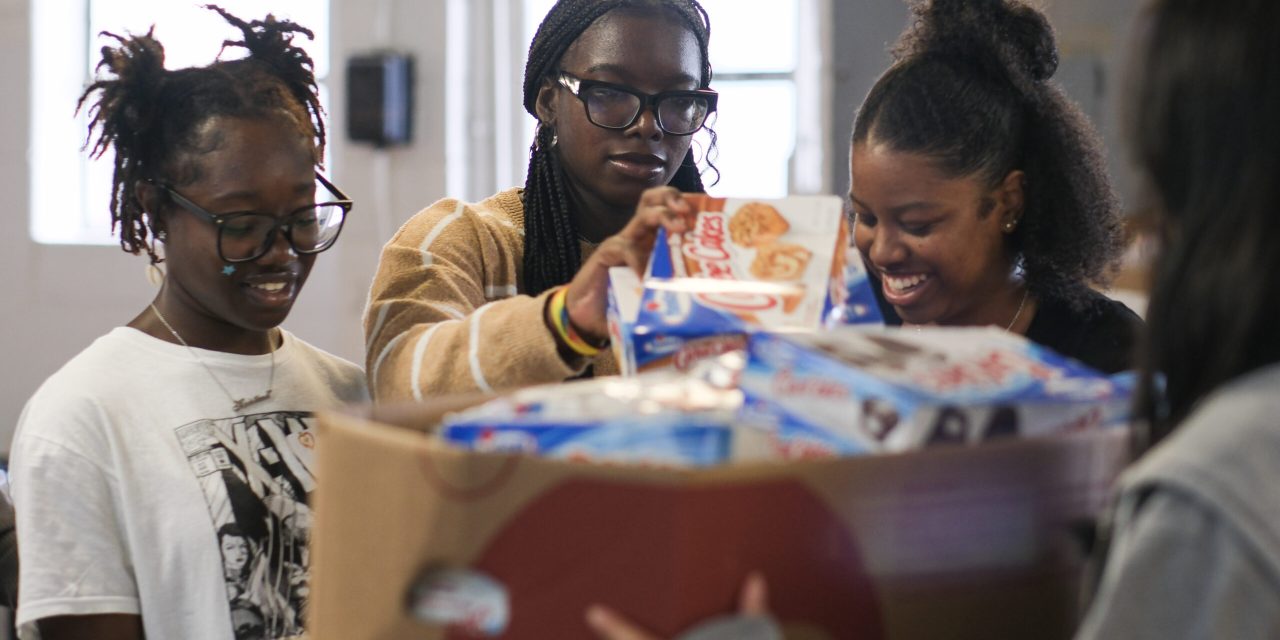By STEPH QUINN
ANNAPOLIS, Md. — Food banks and pantries statewide, already straining to fill the gap from the end of COVID benefits, are bracing to meet additional demand if a government shutdown furloughs federal and military workers and federal nutrition programs run dry.
“If people are without a paycheck and then they also need our services…it will be a strain on our organization, because we are already overwhelmed with people,” said Krista Pettit, director of One Mission Cambridge, a nonprofit group of churches providing food assistance and other services.
Pettit said the number of people the organization serves per month has increased by a third, from 300 to 400, since the end of supplementary pandemic-related benefits in March.
If Congress fails to pass its appropriation bills by midnight on Sept. 30, all but essential government operations will shut down, and federal workers will be furloughed or work unpaid. So far negotiations to produce a compromise to pass those bills have failed.
The Maryland Department of Human Services does not expect that a shutdown would decrease the supplies that food banks receive through the U.S. Department of Agriculture’s Emergency Food Assistance Program, known as TEFAP, according to spokeswoman Amber Washington, since the state orders the food several months in advance.

Anne Arundel County Food Bank Volunteer Coordinator Conor Flynn demonstrates the sorting process to student volunteers from Key School on Wednesday. (Capital News Service/Tommy Tucker)
The state would fund the Supplemental Nutrition Assistance Program and Temporary Assistance for Needy Families benefits using general funds if necessary, and request federal reimbursement after a shutdown, Washington said. The Temporary Disability Assistance Program uses state general funds and will continue unaffected.
But recipients of food from the Women, Infants and Children program could see reduced benefits within days of a federal shutdown, U.S. Agriculture Secretary Tom Vilsack told reporters earlier this week.
The Maryland Department of Health is working to identify steps to alleviate the effects of an interruption to WIC, according to MDH spokesman Chase Cook. More than 123,000 Maryland, low-income mothers, infants and children under 5 receive WIC benefits.
Head Start grants, too, would pause, jeopardizing early childhood care and education for more than 9,000 Maryland families.
Tracy Broccolino, president of the Community Action Council of Howard County, said missed paychecks and cut benefits could force families in that county to choose between food and rent.
“We like to say, ‘The house eats first,’” Broccolino said. “The number one priority for families is to stay housed. So they will dedicate their income to paying the rent, and then not be able to buy groceries.”
Howard County is among the more expensive areas to live in the state, with the median value of an owner-occupied home at $483,200 according to the U.S. Census’ most recent figures, about 43% more than the state median.
Broccolino said that while the food bank used to see 80 to 85 people per week before the pandemic, between 80 and 100 people per day has become the norm.
Anne Arundel County Food Bank CEO Leah Paley said the organization is financially equipped to purchase food to meet increased demand from furloughed workers and affected benefits recipients. But the food bank, which provides food for 70-plus nonprofits, churches, and schools in the county to redistribute to community members, could face logistical challenges.
With more demand, Paley predicted that her group would have trouble getting food to partners fast enough to keep shelves stocked.

Canned foods being stored at Anne Arundel County Food Bank on Wednesday (Capital News Service/Tommy Tucker)
The amount of food local pantries receive from food banks impacts how much pantry staff can offer to people in need. State agencies act as distributors of TEFAP federal food assistance. The Maryland Food Bank and the Capital Area Food Bank have been the state’s partners in distributing Maryland’s share of TEFAP commodities, which include canned fruits and vegetables, beans and pasta, since 2013.
Food banks and pantries rely on a combination of federal and state government support, donations and their own purchasing power to meet community needs.
“There’s a network throughout the state with the mission of trying to fight hunger,” said Stephen Finger, food pantry coordinator at LaVale United Methodist Church in Allegany County. The pantry, which feeds about 240 families per month, gets 35 percent of its food from TEFAP, while the rest comes from purchases and donations.
The food pantry at Heritage Baptist Church in Annapolis “wouldn’t be in business” without the Anne Arundel Food Bank, according to Bruce Livingston, the food pantry’s coordinator.
“The question about the funding, it’s drying up as the need goes up,” Livingston said. While Livingston said Heritage Baptist’s food pantry was serving 70 to 100 people per month five years ago, recently it’s been serving 200 families per month.
The Anne Arundel Food Bank gets about 14 percent of its food from TEFAP, according to the organization’s communications manager, Jason Vaughan.
Paley said if a shutdown dragged on for weeks or months, the organization would request donations and potentially dip into its reserves.
“We’re open for business for anybody who’s unemployed, whose income has been temporarily shut off that needs the food,” Livingston said.
The Maryland Food Bank distributed about 100,000 more pounds of food in January 2019, during the last federal shutdown than in January 2018, according to communications director Joanna Warner.
The food banks said they are ready to meet Maryland’s needs.
“We’ll be watching the news like the rest of the nation,” Broccolino said, “and be ready to open our doors and help them should they need it.”





Recent Comments